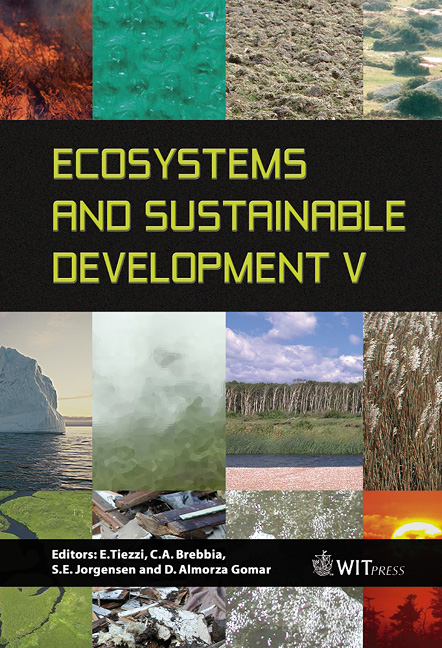How To Measure The Sustainability Of An Area: The SPIn-Eco Project And The Sustainability Of The Province Of Siena
Price
Free (open access)
Transaction
Volume
81
Pages
8
Published
2005
Size
421 kb
Paper DOI
10.2495/ECO050051
Copyright
WIT Press
Author(s)
S. Bastianoni, V. Niccolucci & E. B. P. Tiezzi
Abstract
The SPIn-Eco project has been proposed and funded with the aim of studying the Province of Siena (Italy) and the 36 municipalities into which it is divided from the viewpoint of sustainable development. Several sustainability indicators are used to point out the weak and the strong points for the territory with respect to sustainability. In this paper we have focused our attention on the following methodologies: emergy evaluation, ecological footprint, greenhouse gases balance. The sustainability analysis made during the SPIn-Eco project has produced a data set that allows a practical comparison among these approaches by means of a correlation analysis. The correlations among several indicators based on the above data set are shown. The aim of this paper is to underline the similarities and differences among the three methodologies through correlation analysis. Important correlations were found between ecological footprint and CO2 emissions as well as with the non-renewable exogenous part of emergy flow. No correlation was found between total emergy flow and total ecological footprint. Keywords: emergy evaluation, ecological footprint, greenhouse gases balance, correlation analysis, sustainability. 1 Introduction Sustainability is a concept that requires a clear focus towards a scientific assessment and quantification. The SPIn-Eco project (Sustainability in Province
Keywords
emergy evaluation, ecological footprint, greenhouse gases balance, correlation analysis, sustainability.





